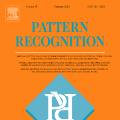Machine learning approaches have been widely used for discovering the underlying physics of dynamical systems from measured data. Existing approaches, however, still lack robustness, especially when the measured data contain a large level of noise. The lack of robustness is mainly attributed to the insufficient representativeness of used features. As a result, the intrinsic mechanism governing the observed system cannot be accurately identified. In this study, we use an efficient topological descriptor for complex data, i.e., the Euler characteristics (ECs), as features to characterize the spatiotemporal data collected from dynamical systems and discover the underlying physics. Unsupervised manifold learning and supervised classification results show that EC can be used to efficiently distinguish systems with different while similar governing models. We also demonstrate that the machine learning approaches using EC can improve the confidence level of sparse regression methods of physics discovery.
翻译:现有方法仍然缺乏稳健性,特别是当测量的数据含有大量噪音时,缺乏稳健性主要是因为使用过的特征的代表性不足,因此无法准确地确定所观测系统的内在机制。在本研究中,我们对复杂数据使用高效的地形描述符,即Euler特性(ECs),作为从动态系统收集的随机时空数据特征特征,并发现基本物理特征。未经监督的多重学习和监督的分类结果显示,EC可用于有效地区别不同管理模式和类似管理模式的系统。我们还表明,使用EC的机器学习方法可以提高物理发现稀有回归方法的信任度。



